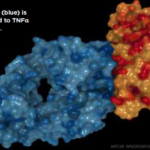 In April, the Federal Trade Commission (FTC) voted 3–2 to finalize a rule banning most noncompete clauses in employer-employee contracts. The rule will have profound effects on the healthcare industry, where noncompete agreements are all too familiar.
In April, the Federal Trade Commission (FTC) voted 3–2 to finalize a rule banning most noncompete clauses in employer-employee contracts. The rule will have profound effects on the healthcare industry, where noncompete agreements are all too familiar.
Although noncompete agreements have traditionally been used by employers to ensure labor continuity, they are written to prevent a departing doctor, nurse or advanced practice provider from working within the territorial reach of the practice they are leaving for a certain period of time. In this day of mass healthcare consolidation, these agreements have fostered an anti-competitive, pro-monopoly healthcare market by leaving healthcare workers without a viable ability to choose their employer. This has resulted in lower wages and limited access to high-quality treatment for many patients—particularly in lower income areas.1,2
The brunt of noncompete agreements has been particularly felt in the rheumatology community, so much so that the ACR came out strongly against them earlier this year. Notably, the ACR’s 2024 policy statements include for a call to ban noncompete agreements for physicians in clinical practice.3
The Rule
First proposed in January 2023 on the coattails of a 2021 Biden administration executive order that buoyed agencies’ efforts to incentivize competition, the rule bans all for-profit employers from including noncompete agreements in employment contracts.4 This spans all terms or conditions of employment that prohibit a worker from, penalize a worker for, or function to prevent a worker from seeking or accepting work in the U.S. from a different person or operating a business in the U.S. after their employment ends.5
Second, the rule requires employers to give notice that existing noncompete agreements are no longer enforceable.5 In addition to preventing employers from entering into new noncompete agreements, the rule also requires employers to notify nonexcepted employees that existing noncompetes will not be and cannot be enforced.5 The rule does not apply to nonprofit employers, nor does it apply to noncompete agreements in certain sale of business agreements or for senior executives at for-profit employers.5
Impact on Healthcare
The rule’s impact will be colossal in the healthcare sector, where the number of independent physicians has declined significantly in recent years, and nearly 75% of physicians are employed by hospitals, health systems or corporate entities.6 Further, according to the American Medical Association, nearly half of all physicians are currently bound by noncompete agreements, which are especially problematic for residents, fellows and young physicians, limiting their opportunities for career advancement and restricting their ability to provide care in economically or socially marginalized communities. These details exacerbate the physician shortage in the U.S. that is projected to worsen in coming years.7
Although more needs to be done to improve patient access to treatment and to increase the number of physicians in the U.S., banning noncompete agreements is a step in the right direction to ensure healthcare workers have more competition for the services they provide. This will lead to better choices for healthcare workers and patients alike.
What to Expect
The rule will go into effect 120 days after publication in the Federal Register. Several lawsuits have been filed questioning the FTC’s legal standing for banning noncompete agreements, most notably by the U.S. Chamber of Commerce. The American Hospital Association has also signaled an intent to sue. It is possible a court could file an injunction that would halt the enforcement of the final rule and extend the effective date of enforcement while these cases proceed.
Earlier this year, the ACR updated its public policy stance to support the banning of noncompete contracts for physicians in clinical practice who are employed by for-profit or nonprofit hospitals, hospital systems or staffing company employers. The ACR sees removal of noncompete clauses as a way to improve patient access, enhance the availability of specialist coverage in a community and reduce health inequities by allowing physicians to work for multiple hospitals. We will monitor these proceedings and fight to ensure the rule is implemented as scheduled.
References
- Colvin AJS, Shierholz H. Noncompete agreements. Economic Policy Institute. 2019 Dec 10. https://www.epi.org/publication/noncompete-agreements/.
- Sherman WF, Patel AH, Ross BJ, et al. The impact of a non-compete clause on patient care and orthopaedic surgeons in the state of Louisiana: Afraid of a little competition? Orthop Rev (Pavia). 2022;14(4):38404. https://www.ncbi.nlm.nih.gov/pmc/articles/PMC9569414/
- 2024 ACR health policy statements. American College of Rheumatology. https://assets.contentstack.io/v3/assets/bltee37abb6b278ab2c/bltd84782969d741aba/acr-health-policy-statements.pdf.
- Executive order on promoting competition in the American The White House. 2021 Jul 9. https://www.whitehouse.gov/briefing-room/presidential-actions/2021/07/09/executive-order-on-promoting-competition-in-the-american-economy/.
- Non-compete clause rule [16 CFR Part 910]. Federal Trade Commission. https://www.ftc.gov/system/files/ftc_gov/pdf/noncompete-rule.pdf.
- Avalere Health. COVID-19’s impact on acquisitions of physician practices and physician employment 2019–2020/. Physicians Advocacy Institute. 2021 June. https://www.physiciansadvocacyinstitute.org/Portals/0/assets/docs/Revised-6-8-21_PAI-Physician-Employment-Study-2021-FINAL.pdf?ver=K6dyoekRSC_c59U8QD1V-A%3d%3d.
- GlobalData Plc. The complexities of physician supply and demand: Projections from 2021 to 2036. Association of American Medical Colleges. 2024 Mar. https://www.aamc.org/media/75236/download?attachment

